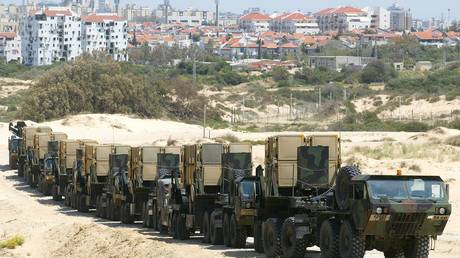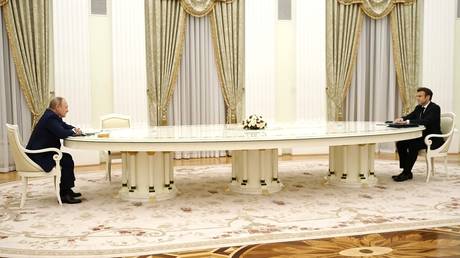
The need for missile batteries in the Middle East could have ramifications for Ukraine, the news outlet says
An increasingly hostile environment in the Middle East has prompted the US to deploy an additional six batteries of the MIM-104 Patriot missile system, doubling the total number in the region, the Wall Street Journal reported on Sunday. The Pentagon is now running low on the equipment, the newspaper said.
The reported relocation was conducted amid a spree of missile and drone attacks on American military bases in Iraq and Syria, which Washington has attributed to Iranian proxy forces. The additional batteries were sent to Bahrain, Kuwait and Saudi Arabia, which host dozens of US military installations, the WSJ said, citing people familiar with the deployments and the Pentagon’s recruitment advertisements for Patriot operators.
One of the more visible consequences of the increased demand for the long-range air-defense systems, as identified by the WSJ, is Washington’s decision not to send a Patriot battery to the Dubai Airshow, which started on Monday. The Pentagon had planned to display all three principal elements of the system, including the launcher, radar truck and command station, but announced the diversion of the hardware in late October.
A Patriot battery normally has eight launchers, though up to 16 may be linked with the same radar and command station. The Pentagon has a total of 60 batteries, according to the WSJ, some of which are deployed throughout the world, from Germany to Guam and South Korea. Washington has permitted some of its allies to purchase the system.
Two Patriot batteries, one provided by the US and another by Germany and the Netherlands, were deployed in Ukraine earlier this year, with additional deliveries promised by Berlin. The capabilities of the US-designed system were subject of conflicting claims by Ukraine and Russia in May.
The Ukrainian government claimed that Patriot batteries were successfully shooting down Kinzhal hypersonic missiles over Kiev. Moscow dismissed this suggestion, however, saying the number of claimed intercepts was larger than the number of Kinzhals deployed by Russian forces.
The same month, there were reports of extensive damage to one of the batteries, after a failure to stop an incoming strike with a barrage of 32 interceptors. US officials told the media that the damage was “minor” and could be repaired by Ukraine itself.
READ MORE: Ukraine aid failing to create jobs in US – NBC
The New York Times reported last month that US engineers were looking for ways to pair American and Ukrainian hardware into “FrankenSAM” systems. The program includes attempts to use Kiev’s old Soviet-designed radar stations to guide Patriot missiles to their targets.




